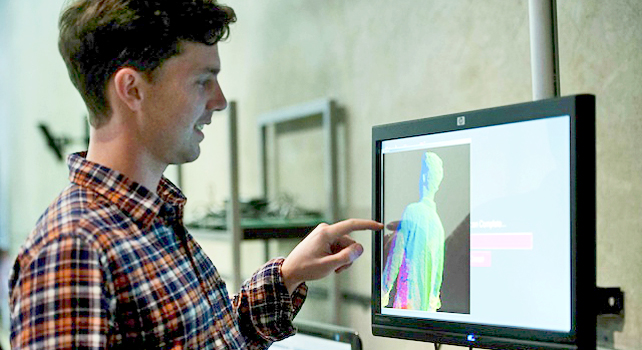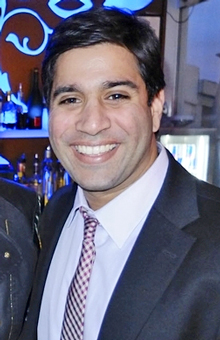Raj Sareen's startup, Styku, was selected as a member of Microsoft's Kinect Accelerator. He wants your game console to help make your clothes fit better--even if "no two boobs are alike."

Raj Sareen is the CEO of Styku, a “virtual fitting room” whose offices I visited over a year ago (see: “The Avatar’s New Clothes”). Styku has since pivoted to focus its body-scanning efforts on the Kinect, and was recently named one of the first batch of startups in Microsoft’s Kinect Accelrator program. I called up Sareen to learn how Styku has progressed, and whether it still struggled with what Sareen’s father had told me was one of the most vexing problems in clothing: how to fit the many shapes and sizes of the breast.
FAST COMPANY: Long time no chat.
RAJ SAREEN: It’s been a while since you wrote about how my dad said no two boobs are alike.
Catch us up on what Styku has been up to since we last spoke.
"It’s going to end up being a very disruptive technology that changes the apparel industry, making it smarter and more efficient."In June 2011 we launched our application, without Kinect, on a site called Billy Blues. It ran for about three months, and was a huge success insofar as generating some great data supporting our business model. We decided to go back and rework our prototype to include the Kinect. Since there are 20 million Kinects in households today, we figured it’s a great way for people to scan themselves at home. By January we had a prototype. We demoed it to Microsoft, and they immediately put us in the top 25 of the 500 companies that applied to the Kinect Accelerator. Later they flew in see it in person, and they immediately said, “You guys are in.”
So you’re in Redmond now?
We’re on a campus in South Lake Union, right in the heart of Seattle. I’m here with two of my software developers. We’re here at 8:30 in the morning, and I don’t generally leave before midnight. Usually then I’m catching up on emails, and it’s a blessing if I get to bed before 1 or 2 a.m. Then it’s back to the grind every morning.
 What are you getting out of teaming up with Microsoft?
What are you getting out of teaming up with Microsoft?
Someone came in the other day, saw Styku, and said, “I know the chairman of the board of Gap. I’ll put you in touch right away.” We had a meeting today. While in Seattle, it makes sense to reach out to some of the local companies, like Nordstrom and Seattle. Microsoft was able to make those introductions. We made one demonstration to somebody at Nordstrom’s innovation lab.
I didn’t know Nordstrom had an innovation lab.
We didn’t know that either. In addition, we get about $160,000 worth of free software from Microsoft, or more. We essentially get a license to anything we want, for free.
So you’re like a kid in a candy store?
Exactly. “Are you kidding me? We get that?” Over time here we’ve realized there’s so many more products we can build. We can scan for all sorts of interesting accessories. Helmets, or under-armor: actual under-armor for the military, where fit is not about looking good. It could be the difference between life and death, literally, knowing the exact shape of an arm hole so you can make custom under-armor for soldiers on the frontline. We’ve also experimented with 3-D knitting technology, a machine that will automatically knit a custom-made garment. In March, we did a proof of concept. We scanned customers, had them customize the garment, and then we printed, dyed, cut, and sewed the garment, and delivered it within four hours.
[youtube C00cbfykUvY]
What are your grandest hopes for where Styku might be in a few years?
I think Styku’s going to be the platform for size recommendations and visualizations of how a garment looks on a body. It’s going to end up being a very disruptive technology that changes the apparel industry, making it smarter and more efficient. It will enable new business models, and open up the online market for consumers previously hesitant to risk buying online.

My first visit to the Styku offices revealed that breasts are the hardest part of the body to fit. Are you finally solving that tough technological problem?
I’ll tell you one thing about our scanner, it very accurately measures the shape of a woman’s breast. Oftentimes, I have to be careful, because I spend a lot of time scanning the female form. I recently got engaged, and I realized I have an excuse if I’m staring at a girl--I can just say I’m doing market research, getting an idea how she would be scanned in the fitting room.
And your fiancée buys that?
I don’t think she’s falling for it, no.
This interview has been condensed and edited.
For more from the Fast Talk interview series, click here. Know someone who'd make a good Fast Talk subject? Mention it to David Zax.
Follow Fast Company on Twitter.